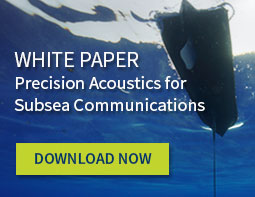Oceans ‘18 Impressions
Liquid Robotics — November 19, 2018
Science Collaboration for a Healthy and Secure Ocean
Last month, the MTS/IEEE OCEANS ‘18 conference was held in Charleston, SC. As always, it was an excellent venue to learn about the latest developments, policies and technological advancements in ocean science. Equally valuable was the opportunity to network with leaders and individuals in the government, private-sector and academia—all dedicated to improving the ocean.
This year’s theme, Healthy Oceans, Resilient Coasts, Robust Commerce… Strong Nations, accented the importance of the intersection of science, technologies and regulatory/polices to foster a sustainable ocean. The conference “explores how science and technology must inform and enable the challenges of a 21st Century where environment, society, and economics are highly interconnected.” This was a critical message stressing the importance of international collaboration required to achieve the UN’s Sustainable Development Goal #14 by 2021 and 2030, and to stimulate and protect the ocean economy.
One of this year’s keynotes was by RADM David J. Hahn, Chief of Naval Research, Director of Innovation, Technology Requirements and Test & Evaluation. In his talk, Sea Science: Navy Task Force Promotes Increased Knowledge of Ocean Environment, RADM Hahn discussed Task Force Ocean (TFO), a program designed to reinvigorate the Navy’s partnership with the national ocean science community. Under TFO, ONR will increase naval oceanographic research that will help the Navy keep its competitive advantage. RADM Hahn underscored this point,
“The Navy needs your help,” he told attendees at the three-day symposium, the first in a series designed to highlight Navy ocean science issues. “We need a committed partnership between government, academia and industry to ensure the U.S. remains the world leader in ocean science, especially Navy-relevant science. Our competitors are gaining on us.”
This intersection and dependency on advancing ocean science for the future of our nation’s maritime security is important especially as it will afford greater investments in ocean science.
Conference Energy and Networking
This year I was honored to participate in the technical program and speak on the topic of Autonomous Surface Vehicle Design. Each presenter was given twenty minutes to talk, with fifteen of those going to the presentation and five for questions. It’s not a lot of time! The presentation went well though, with a great audience of over sixty people and multiple questions at the end.
In addition to speaking, Liquid Robotics had the opportunity to exhibit our Wave Glider. As always, the Wave Glider’s data collection and communications capabilities attracted quite a crowd! We were engaged in conversations about its use for maritime security, tsunami and METOC applications. Discussion on extreme sea state operations particularly in the Arctic and Southern Ocean were also very popular.
The show had a good energy for the entire time, which was great to experience. In addition to the meetings “on-the-floor,” we also had a chance to experience some of Charleston’s hospitality and continue networking during the evenings. Some of the best conversations and connections come from the less formal conversations.
Until Next Year
Next year OCEANS will be in Seattle. With Seattle’s strong maritime industry, I’m sure that it will continue to build on the success from this year in Charleston. I look forward to more interesting talks, meetings and discussions. See you in Seattle!
